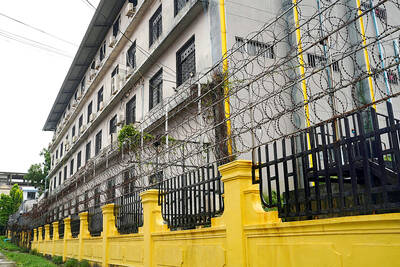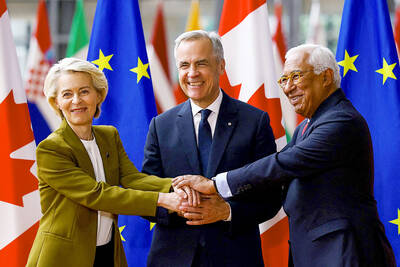Can anyone beat Frederic Chopin as an emblem of the Romantic artist? In the great Polish composer, towering genius combined with a wasted frame and a pallid face behind which lurked melancholy, a brooding over death, a disconnection from ordinary life and sometimes horrifying hallucinations.
A force that created this image was the French novelist George Sand, who described how her lover, cursed by prodigy and doomed by frailty to an early grave, would be shaken by ghostly visions.
“The phantoms called him, clasped him, and instead of seeing his father and his friend smile at him in the ray of faith, he repelled their fleshless faces from his own and struggled under the grasp of their icy hands,” Sand wrote.
However, a study by a pair of Spanish neurologists tarnishes this compelling gothic tableau. Chopin’s hallucinations probably had more to do with a medical condition than the burden of the Romantic artist, it suggests. The study was published on Monday in Medical Humanities.
Manuel Vazquez Caruncho and Francisco Branas Fernandez of the Xeral-Calde Hospital Complex in Lugo draw this conclusion after sifting through contemporary accounts and Chopin’s letters.
In 1848, at a concert at a private house in Manchester, England, Chopin was playing his Sonata in B flat minor when he abruptly left the room but returned a short while later to finish the piece.
In a letter to George Sand’s daughter, which has never been published in any collection of his correspondence, Chopin explained that he had been terrified to see “cursed creatures” emerging from the half-open case of his piano.
In other accounts by Sand and one of his pupils, Madame Streicher, Chopin was sometimes seized by a mental state that would leave him wild-eyed and his hair literally standing on end.
He himself described himself sometimes as being in a dreamy state — in “imaginary spaces” — and once said he felt “like steam.”
The doctors looked through the psychiatric states that could possibly explain the great composer’s problems. They ruled out schizophrenia because it usually takes the form of voices. Migraines can induce hallucinations, but these can last up to half an hour, whereas Chopin’s episodes were brief, and lasted only a few minutes or even seconds.
Another disease called Charles Bonnet syndrome was excluded, because it is linked to eye disorders, and there was no evidence that Chopin suffered from these.
This leaves epilepsy of the temporal lobes, whose seizures can unleash brief, stereotyped visions of the kind experienced by Chopin and a condition called jamais vu, or a dream-like disconnection from one’s surroundings.

Drug lord Jose Adolfo Macias Villamar, alias “Fito,” was Ecuador’s most-wanted fugitive before his arrest on Wednesday, more than a year after he escaped prison from where he commanded the country’s leading criminal gang. The former taxi driver turned crime boss became the prime target of law enforcement early last year after escaping from a prison in the southwestern port of Guayaquil. Ecuadoran President Daniel Noboa’s government released “wanted” posters with images of his face and offered US$1 million for information leading to his capture. In a country plagued by crime, members of Fito’s gang, Los Choneros, have responded with violence, using car

CYBERCRIME, TRAFFICKING: A ‘pattern of state failures’ allowed the billion-dollar industry to flourish, including failures to investigate human rights abuses, it said Human rights group Amnesty International yesterday accused Cambodia’s government of “deliberately ignoring” abuses by cybercrime gangs that have trafficked people from across the world, including children, into slavery at brutal scam compounds. The London-based group said in a report that it had identified 53 scam centers and dozens more suspected sites across the country, including in the Southeast Asian nation’s capital, Phnom Penh. The prison-like compounds were ringed by high fences with razor wire, guarded by armed men and staffed by trafficking victims forced to defraud people across the globe, with those inside subjected to punishments including shocks from electric batons, confinement

The team behind the long-awaited Vera Rubin Observatory in Chile yesterday published their first images, revealing breathtaking views of star-forming regions as well as distant galaxies. More than two decades in the making, the giant US-funded telescope sits perched at the summit of Cerro Pachon in central Chile, where dark skies and dry air provide ideal conditions for observing the cosmos. One of the debut images is a composite of 678 exposures taken over just seven hours, capturing the Trifid Nebula and the Lagoon Nebula — both several thousand light-years from Earth — glowing in vivid pinks against orange-red backdrops. The new image

Canada and the EU on Monday signed a defense and security pact as the transatlantic partners seek to better confront Russia, with worries over Washington’s reliability under US President Donald Trump. The deal was announced after a summit in Brussels between Canadian Prime Minister Mark Carney and European Commission President Ursula von der Leyen and European Council President Antonio Costa. “While NATO remains the cornerstone of our collective defense, this partnership will allow us to strengthen our preparedness ... to invest more and to invest smarter,” Costa told a news conference. “It opens new opportunities for companies on both sides of the